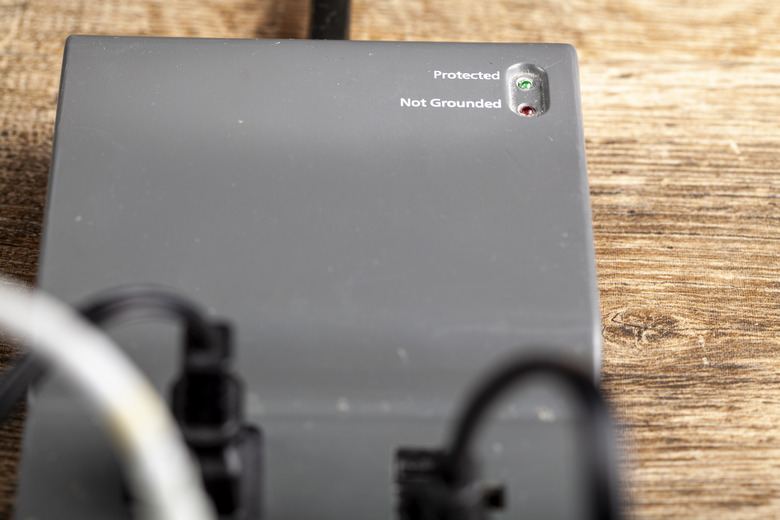Can You Run A Portable Air Conditioner On A Surge Protector?
Running a portable air conditioner on a surge protector seems like a good idea that would protect the unit, but the way it works, a surge protector isn't usually the best option. While technically you could run a portable air conditioner on a surge protector under the correct circumstances, you may not need to do so. A portable air conditioner has several safety nets already in place to prevent power surges.
Tip
A portable air conditioner should be plugged directly into an outlet and not into a surge protector or extension cord. There are multiple protection options to prevent damage to the unit from power surges.
How Portable Air Conditioners Work
A portable air conditioner works by pulling hot air out of the room, cooling it and circulating the cooled air in the room. Extra hot air is vented out of the home through a hose, usually vented through the window. The unit runs until it reaches the temperature you choose, then it shuts off until the room starts to heat up. It then turns back on to cool the room again.
The unit cycles on and off to keep the room at the temperature you set. During the cycling process, the portable air conditioner draws varying amounts of electricity. When it turns on, there's a large surge in the power it needs. The changing draw of electricity can cause your power strip to become overloaded or overheat.
The potential for overloading or overheating is why it's best to plug a portable air conditioner directly into a dedicated, grounded wall outlet. Some portable air conditioner manufacturers specifically say the unit should be plugged into an outlet. Read your owner's manual before using an extension cord or surge protector.
Surge Protector Use
Running a portable air conditioner off a surge protector requires confirming that the surge protector is able to carry the electrical supply demanded by the air conditioner. A surge protector allows only so much electricity to flow through it, and the amount depends on the surge protector model. Even if the circuit breaker that supplies electricity to the surge protector is able to carry a large load of electricity, the surge protector wiring might not support the load.
Even if the surge protector can support the air conditioner's electrical demand, it might only just be able to do so, which means no other devices should be plugged into the surge protector or its electrical outlet. Any extra devices plugged into the surge protector or electrical outlet might cause the circuit breaker to trip and stop the air conditioner from working.
Circuit Breaker Protection
A portable air conditioner gets protection in other ways even without a surge protector. The circuit breaker, which allows electricity to flow to the portable air conditioner and, if necessary, the surge protector, is the air conditioner's first line of defense against a power surge. At the first sign of a power overload, the breaker will trip, opening the circuit and severing the line of power from the breaker to the air conditioner.
Plug Overload Device
Some portable air conditioners feature a power surge protector in their power plug, which prevents power surges from flowing from the electrical outlet to the air conditioner if a power surge makes it past the circuit breaker. Like a circuit breaker, the plug trips and severs the flow of electricity from the circuit breaker to the portable air conditioner. Attaching a surge protector between the portable air conditioner and the circuit breaker is akin to installing a surge protector between two surge protectors. If the plug's surge protector device is tripped, you can reset it using its "Reset" button.
Internal Overload Device
The last stand for a portable air conditioner against a power surge is the appliance's compressor. If your AC compressor doesn't turn on, it could be a built-in protective function. After the unit is turned off, it requires about three minutes of standby time for the compressor to start when reactivated. This factor prevents a power surge from reaching the compressor and burning the air conditioner's motor. It is another reason why a surge protector isn't required for a portable air conditioner.
